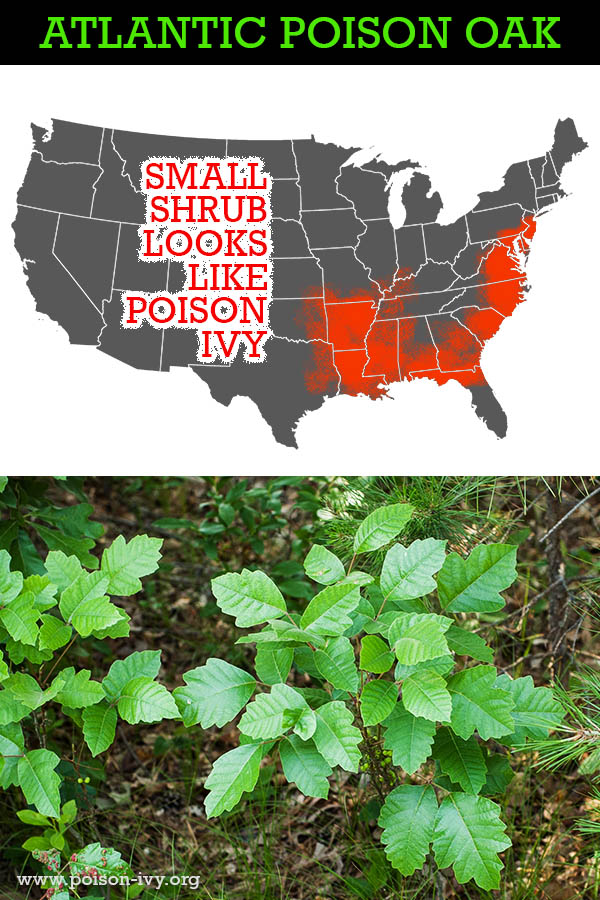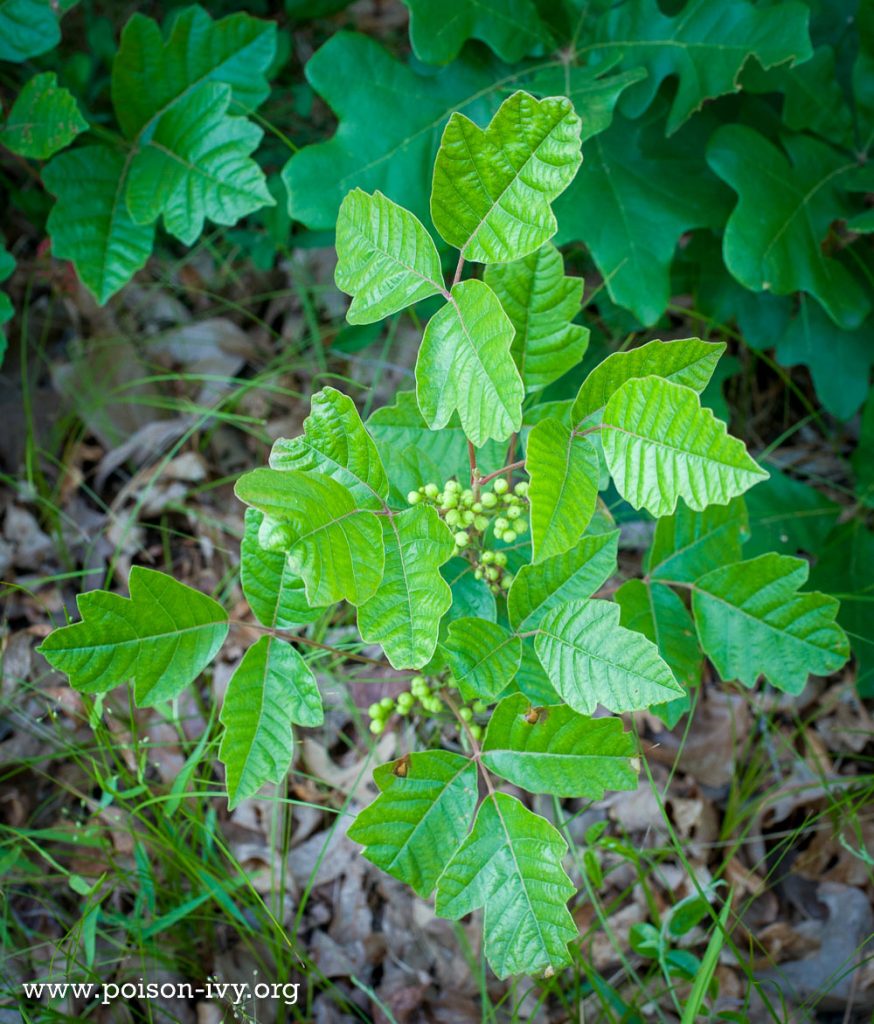
Poison Oak with Berries
Atlantic poison oak only grows as a small shrub, not as a ground vine nor as climbing vine. So you can find flowers and berries on it near the ground.
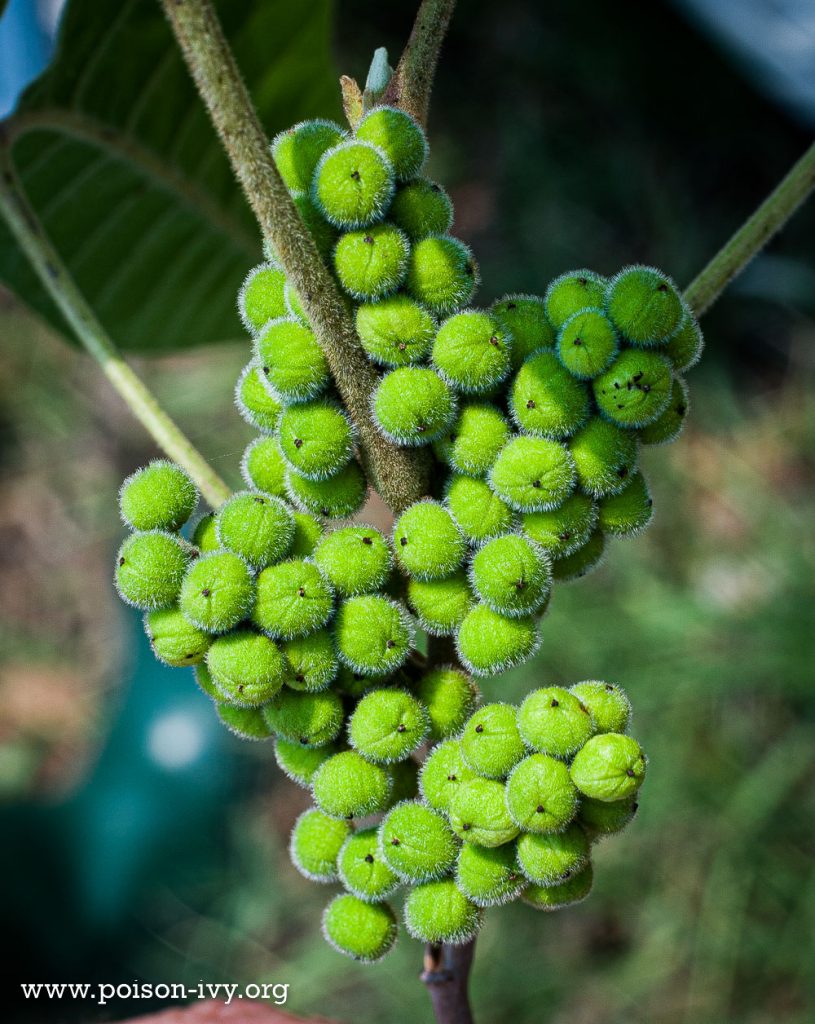
Poison Oak Berries Close Up
The berries of Atlantic poison oak are hairy, unless those of Pacific poison oak and both poison ivies.
They also have lines around them like those on a basket ball, while poison ivy berries have few lines.
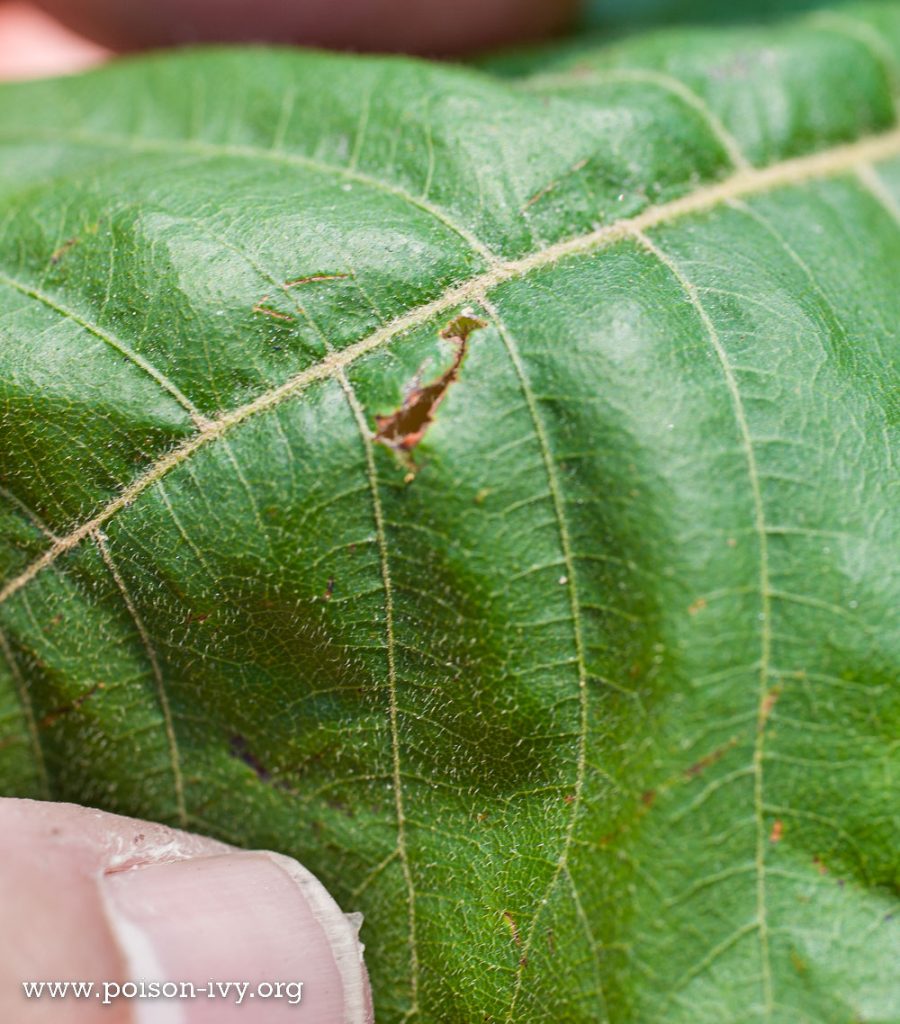
Poison Oak Leaf Close Up
If you lose closely at the leaves of Atlantic poison oak you will see they have short hairs on them, unlike poison ivy. (By the way, the fellow holding this leaf swears he has a lifelong immunity to poison ivy and poison oak…)
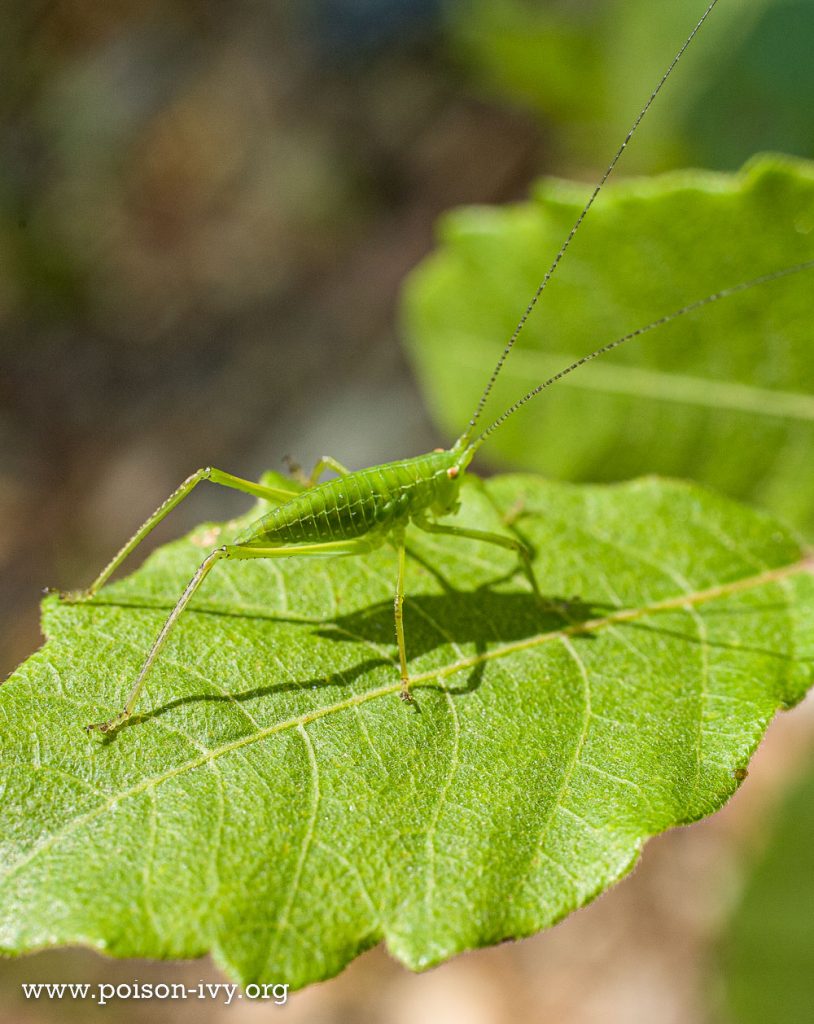
Insect on Poison Oak Leaf
The fact that this insect was happy to hang around on the leaf of Atlantic poison oak might indicate that the oil that drives humans nuts does not repel insects.
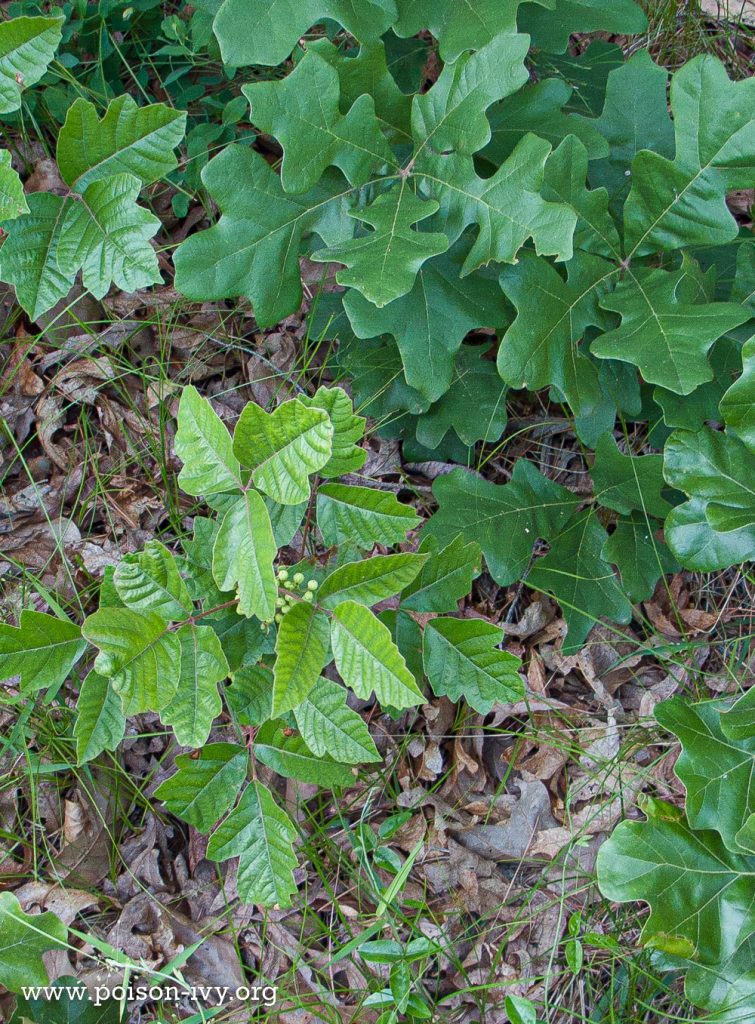
Poison Oak With Actual Oak
The plant on the top right of the photo is an actual small oak tree and you can see that its leaves don’t really look like poison oak, the plant on left and bottom left.
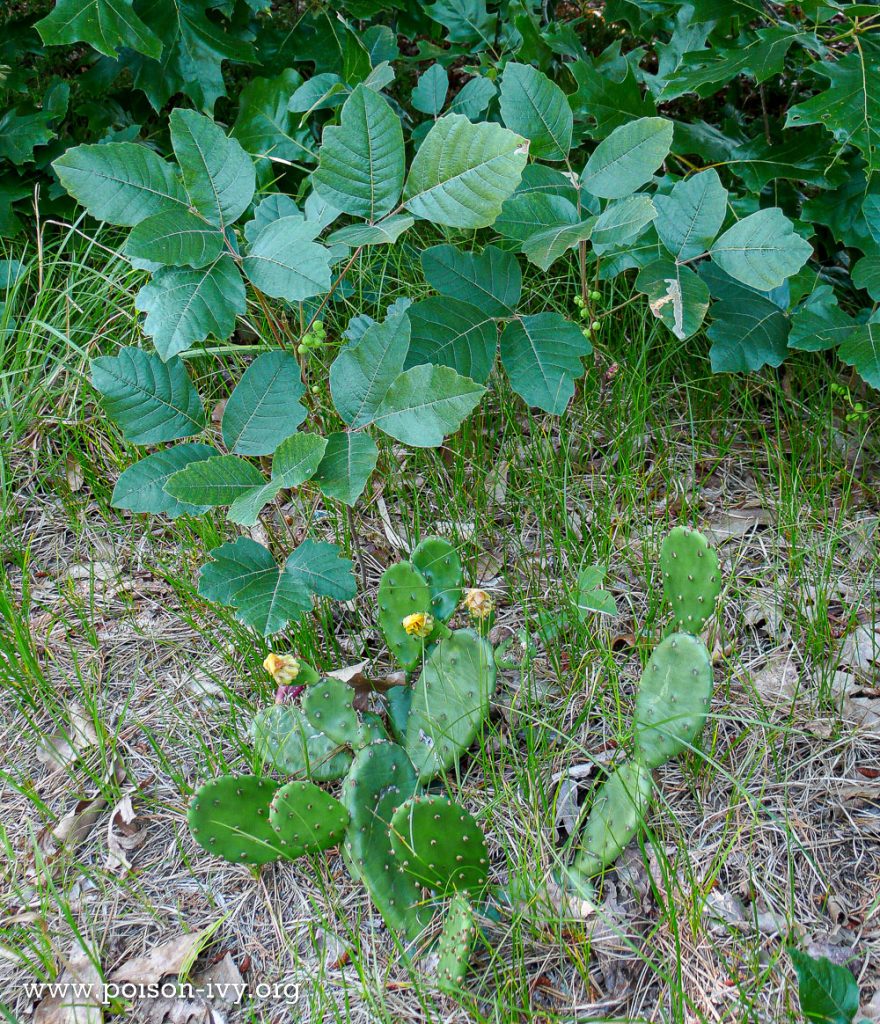
Poison Oak With Cactus
Here is Atlantic poison oak growing right next to a cactus plant, which shows that they both thrive in similar sandy soil.
This was taken in southern New Jersey, which is about as far north as Atlantic poison oak has been found.
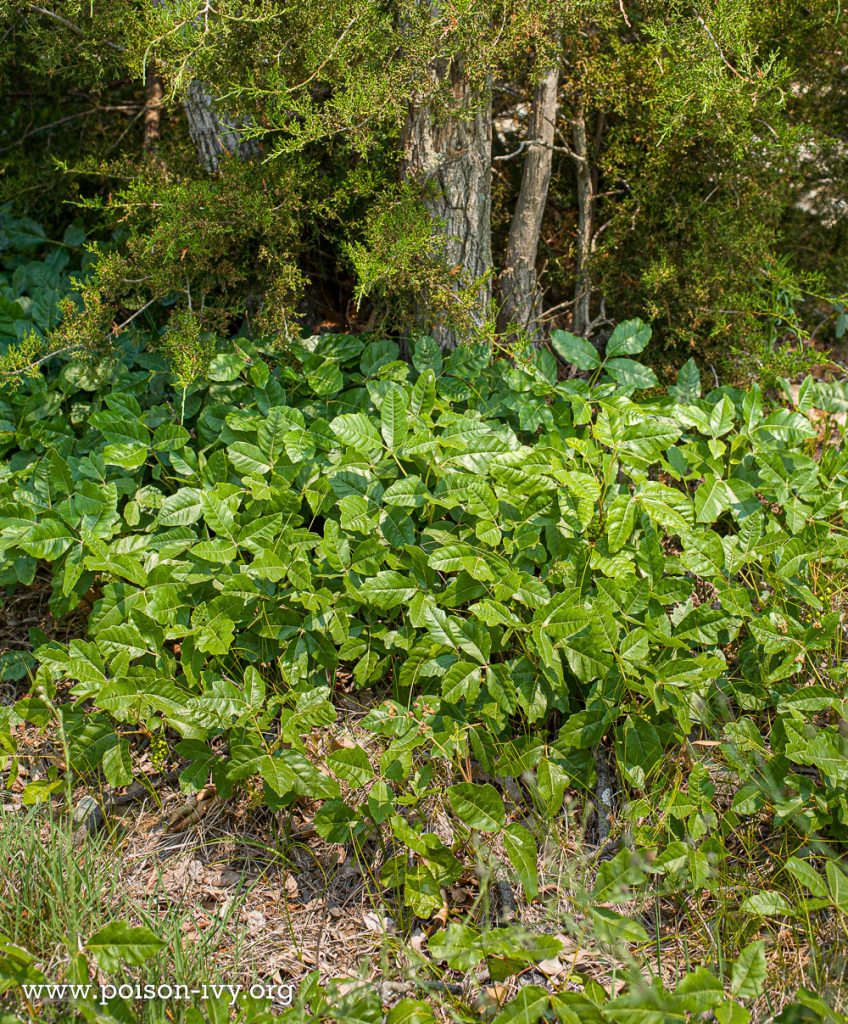
Atlantic Poison Oak Growing Under An Evergreen
The poison oak is growing right up the tree base, but it will not climb the tree, which poison ivy would do.
In California you find Pacific poison oak growing in the shade of trees to avoid too much hot sun. Atlantic poison oak might do the same.
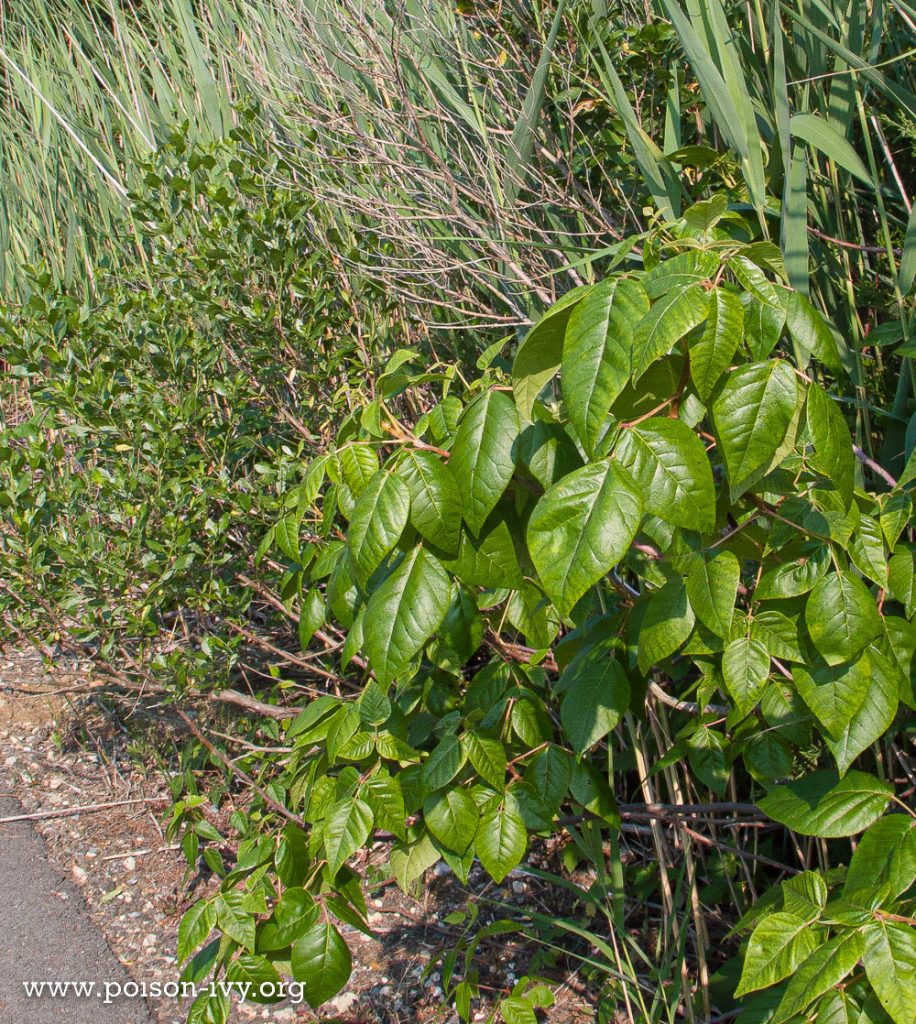
Atlantic Poison Oak or Eastern Poison Ivy?
Since these two plants grow close together and can have almost identical shaped leaves it is hard to tell them apart.
You don’t have to tell them apart: just avoid both of them. But if you look very closely at the leaves you will see hairy fuzz on the poison oak but not on the poison ivy.
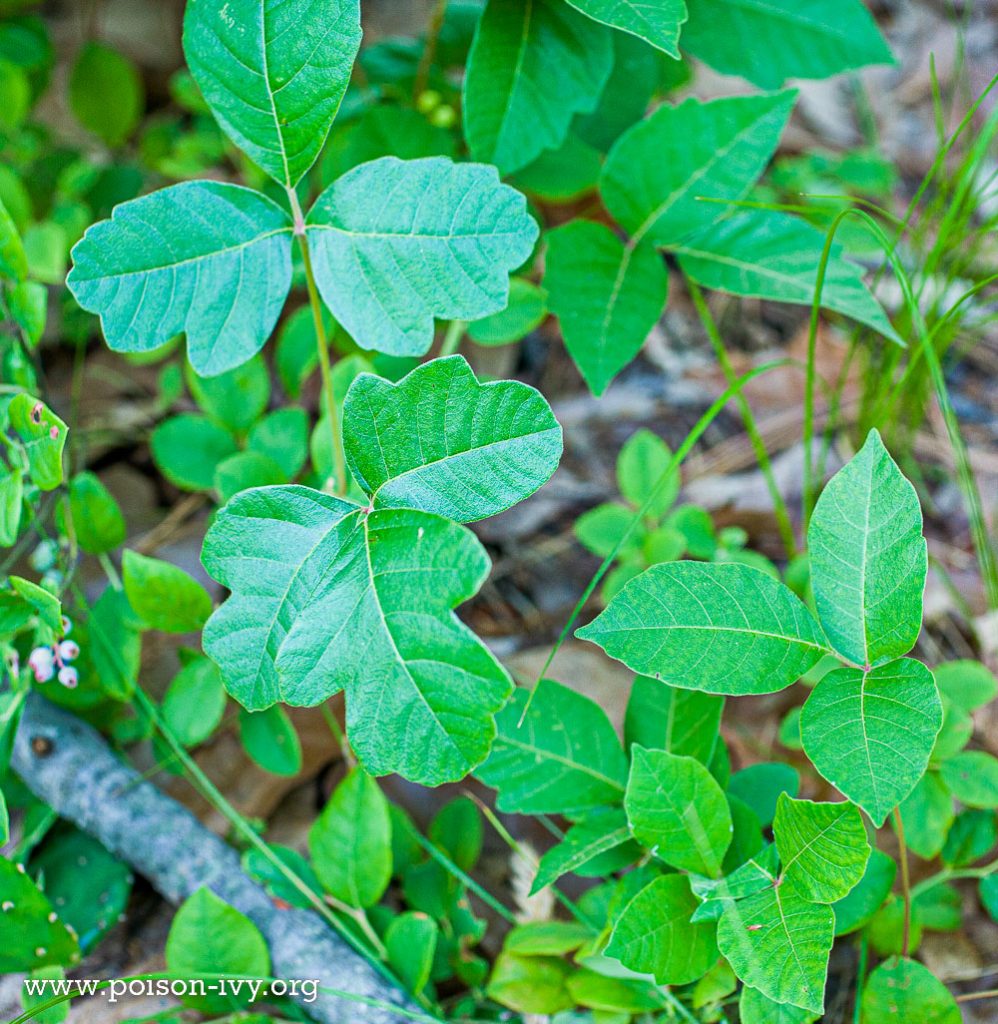
Atlantic Poison Oak and Eastern Poison Ivy Interbreeding?
The leaves on the left are clearly poison oak, but the ones on the right with pointed shapes, look a lot more like poison ivy.
There are three possibilities here:
- Both are Atlantic poison oak
- One is oak, one is ivy
- They interbreed and this is a case of that.
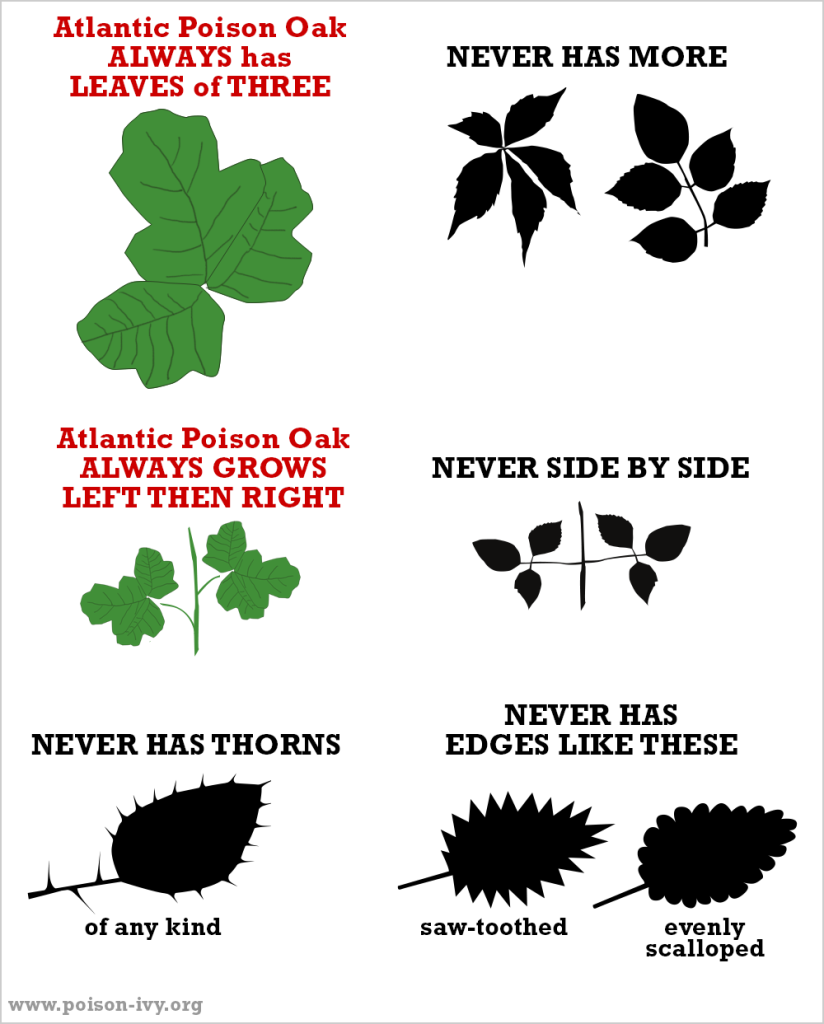
Atlantic Poison Oak, Always and Never
Just like for poison ivy, these rules always work:
Plants have three leaflets, almost never ever more than three.
Poison ivy leaves grow out of the stem right across from each other, not taking turns.
Poison ivy never ever has thorns and never has neatly saw-toothed or scalloped leaf edges.
